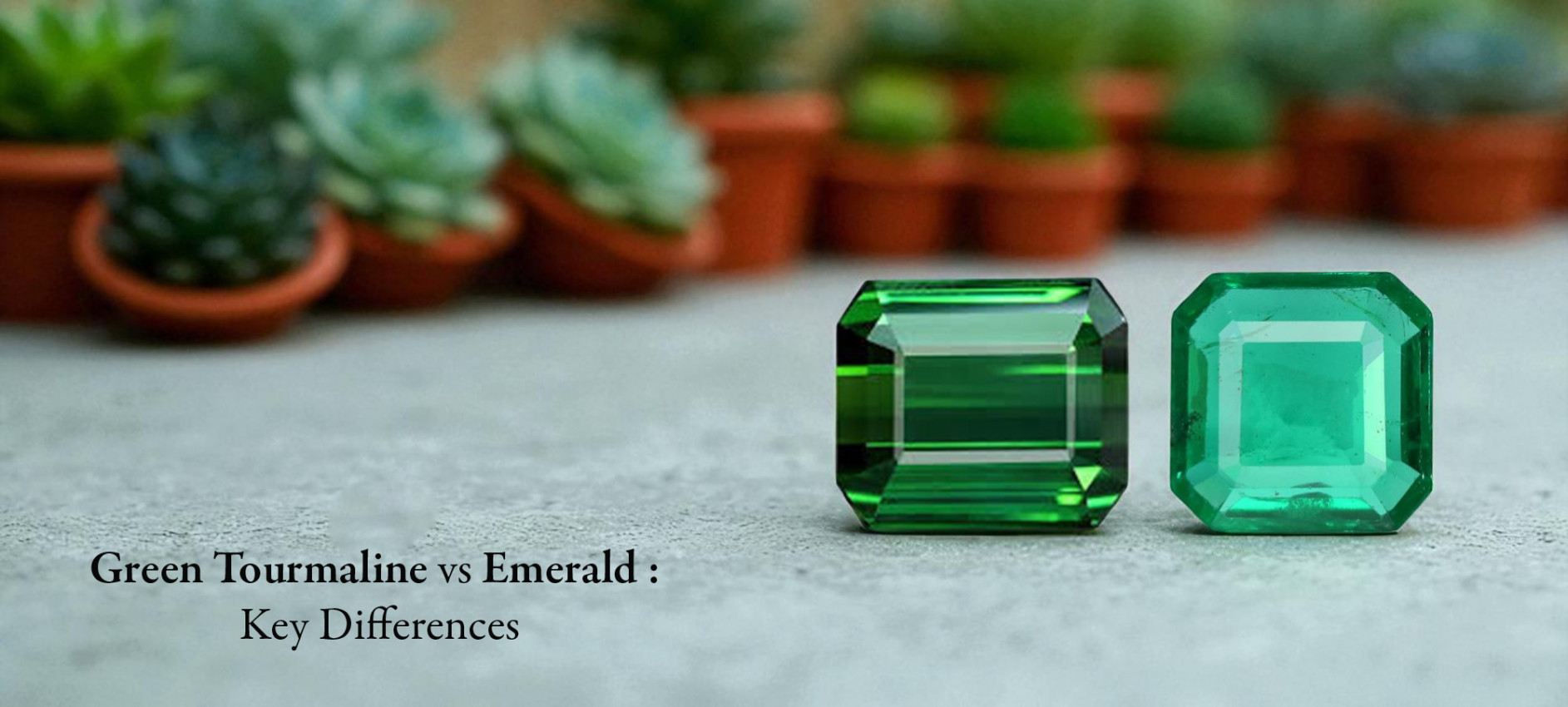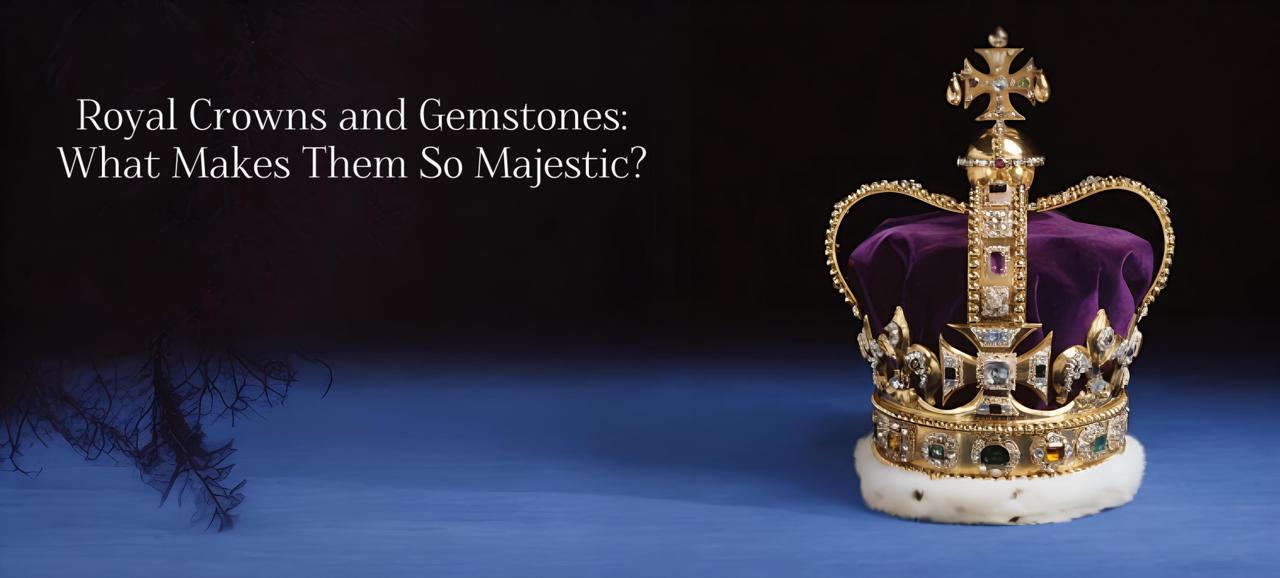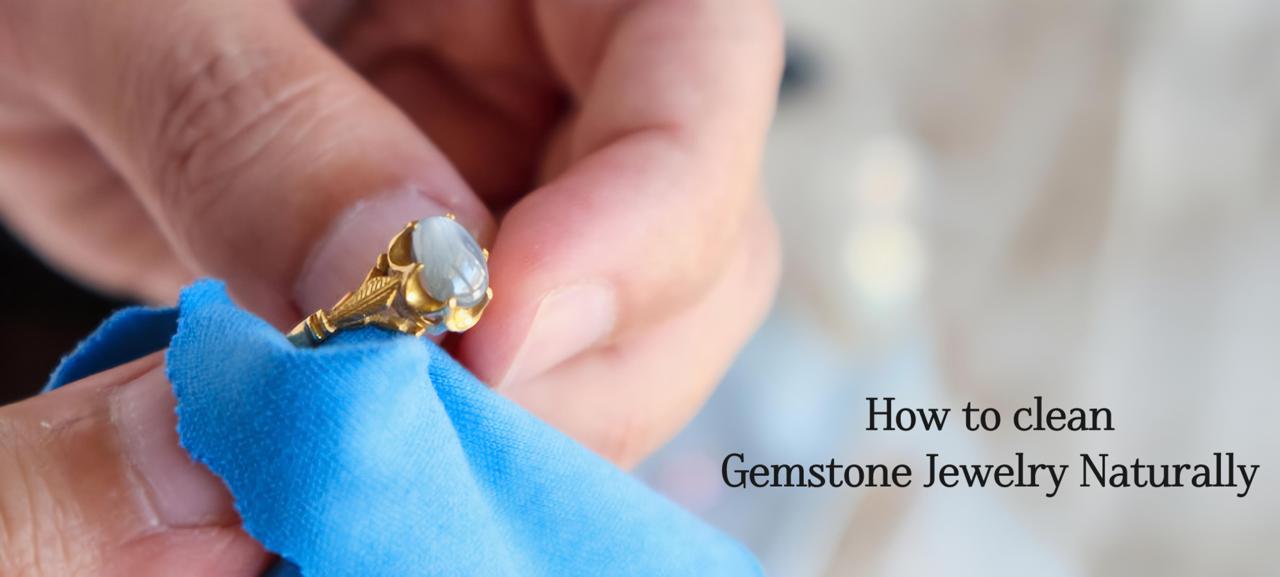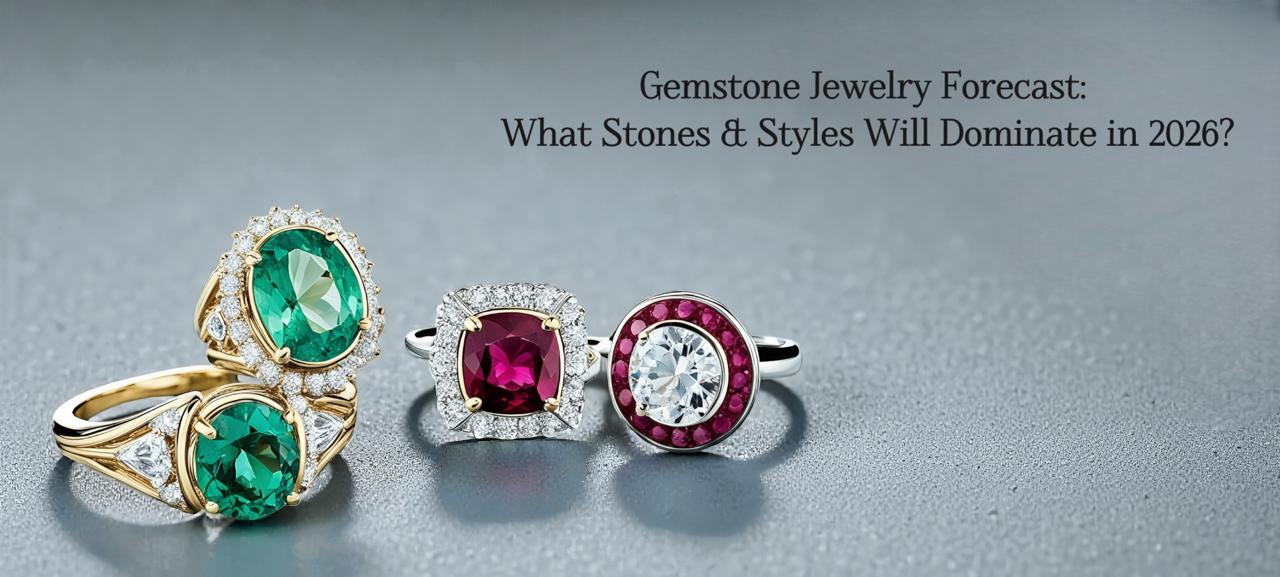When talking about green gemstones, emeralds come to mind first. Many gems appear to have the same color amongst which green tourmaline is one of them. Both these gems, though, share similar hues but are different in many ways.
Each of these stones are admired for their stunning appearance, but exploring their differences is equally important. There are many points on which
emerald stone
and tourmaline differ, setting them apart in jewelry and astrology.
This blog delves into the issues of differentiation, highlighting the individual attributes, origins, and distinct energies they bring to those fortunate enough to adorn them.
Unveiling the Physical Disparities: Green Tourmaline (Verdelite) vs Emerald The first and foremost point of differentiation between the two gemstones is their physical appearance. Of course, this is one reason few people consider them identical. They
appear green at first glance, and one might get confused with their identity.
Chemical Composition
Emerald gemstone is a mineral variety of beryl, whereas green tourmaline is a silicate of aluminum and boron. The difference between these two gemstones lies in chemical composition.
Where green emerald stone has traces of iron, vanadium, and chromium, the green variety of tourmaline consists of elements such as manganese, calcium, sodium, manganese, zinc, iron, chromium, and vanadium. However, the fantastic green color in both
gemstones is due to the presence of chromium.

No-Oil Emerald Colombia - 3.16 Carat
VIEW MORE
Exploring the Difference in Color
The most specific difference people often confuse among these two gemstones is their similar color. The color is not identical, but it appears to be when kept alongside. Emerald (
Panna stone
) features a lush green color that is its characteristic color, differentiating it from other gemstones like
tourmaline stone
and
Peridot stone
This verdant color is reminiscent of lush green landscapes. The color ranges from vivid green to bluish and yellowish green. In comparison, green tourmaline stone features a pale mint to neon green to a wider shade of deep green, making it a near
resemblance to sometimes peridot or emerald.
Green Tourmaline vs peridot, the key difference lies in color. While the former showcases wide shades of green color from light to dark, the latter is only found in olive green color.
Unveiling the Clarity and Pattern
Beryl vs tourmaline, the difference lies in the inclusions. The common inclusions natural to panna stones are called jardin.
Natural emerald stone
with minimal or no inclusions are difficult to find and are considered valuable.
Moreover, these stones with even distribution of color are highly desirable. Green tourmaline, on the other hand, ranges from transparent to opaque. These are less expensive as compared to panna gems.
Origin of Gemstones
Natural green emeralds are created from beryl minerals. This mineral comprises beryllium, silicon, oxygen, and aluminum and is found in metamorphic and granite rocks. Under the right pressure and temperature conditions, the gemstone crystals start
forming.
These beryl gemstones are found in Madagascar, Zambia, Colombia, Brazil, Canada, Australia, the U.S., and many others.
Green Tourmaline formation occurs in igneous rocks such as granite, pegmatite, and volcanic rocks. The elements necessary for this
gemstone
formation include boron, lithium, and others.
Like other gemstone formations, the right pressure and temperature are required to form the green variety of tourmaline. The noteworthy sources from which these gems include Sri Lanka, Brazil, Afghanistan, Madagascar, and the U.S.
Hardness of the Gemstones
The hardness of the gemstone determines its ability to resist wear and tear. Emerald hardness is 7.5-8, whereas green tourmaline hardness is 7-7.5. Though both these gemstones are compatible with jewelry, emeralds are more scratch-resistant.
When comparing tourmaline vs emerald hardness, the latter is the hardest green gemstone.
Green Tourmaline vs Emerald: Key Difference in Astrology
While the Green tourmaline ring is associated with vitality, wisdom, and creativity, the emerald ring symbolizes new beginnings, love, and affection.
Both these gemstones are associated with the heart chakras.
The green beryl stone is the
birthstone of May
, while tourmaline green stone is the
birthstone of October
.
In addition to this, there are differences between the zodiac signs and the significant gemstones as well.
Who should wear a panna stone?
Taurus and Gemini should wear these green gems. Libra and Scorpio are suggested to wear a green tourmaline stone.
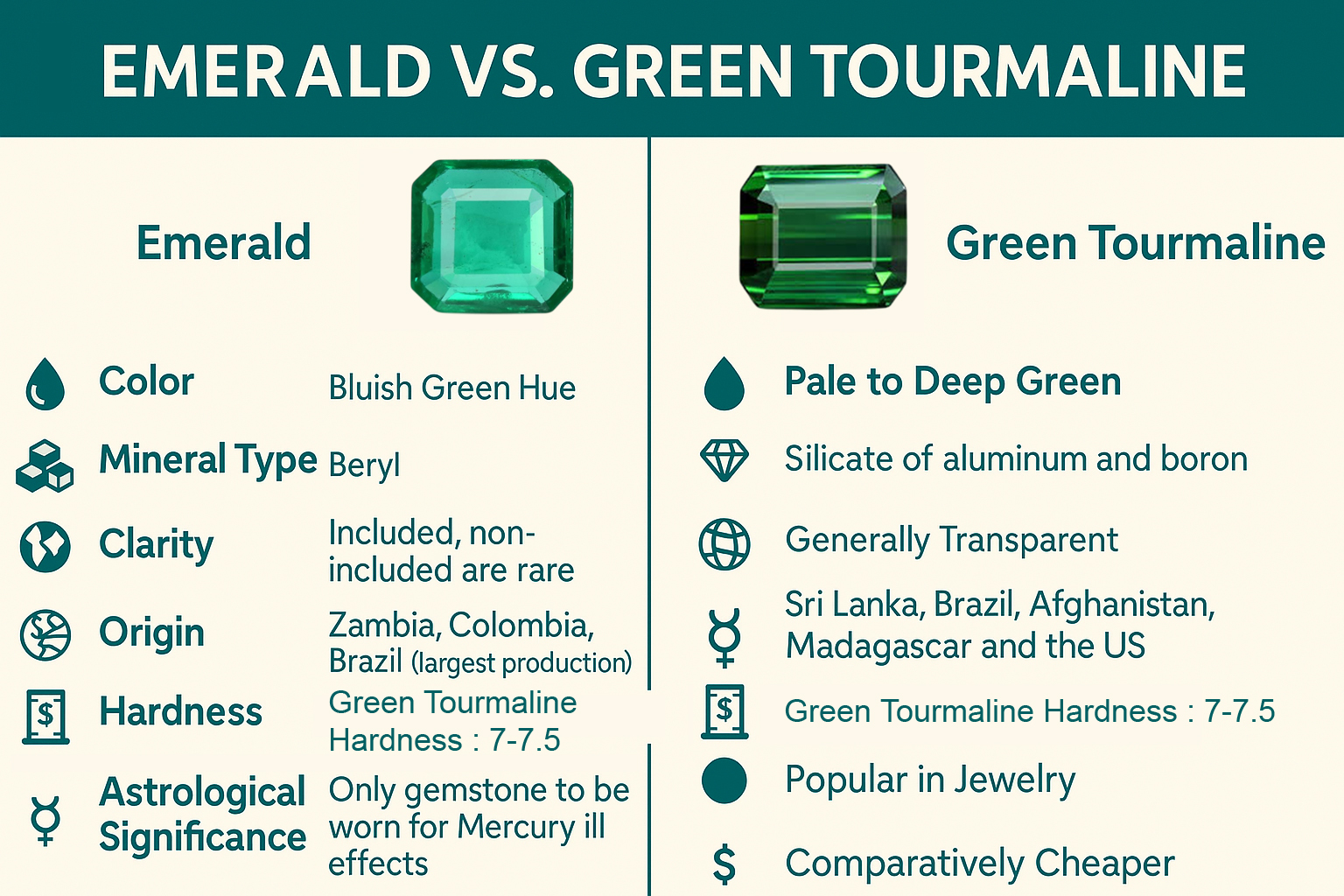
Tourmaline vs Emerald Price
The price of both these gemstones depends upon the 4C's. Emerald stone price starts from INR 2,000 to INR 70,000 and can extend even more depending on the quality and origin of the stone.
On the other hand, the green tourmaline stone price starts from INR 400 to INR 2,000. It can be inferred that tourmaline is less expensive than
panna ratna
. While the former accounts for heirloom jewelry, the latter is a budget-friendly option for those looking for green gems.
In conclusion, while these gems share a captivating green hue, they differ significantly in composition, durability, and metaphysical properties. Prized for centuries, Emeralds are part of historical narratives and symbolize luxury.
With their vibrant color and astrological allure, they persist as timeless adornments. On the contrary, Green Tourmalines, though valued for their beauty, offer a more budget-friendly alternative with varied color possibilities. However, Paraiba tourmaline
is a rare gemstone which
Understanding these distinctions allows enthusiasts and collectors to appreciate each gemstone's unique attributes, whether it be the regal charm of emeralds or the versatile allure of Green Tourmaline.
 Categories
Categories 